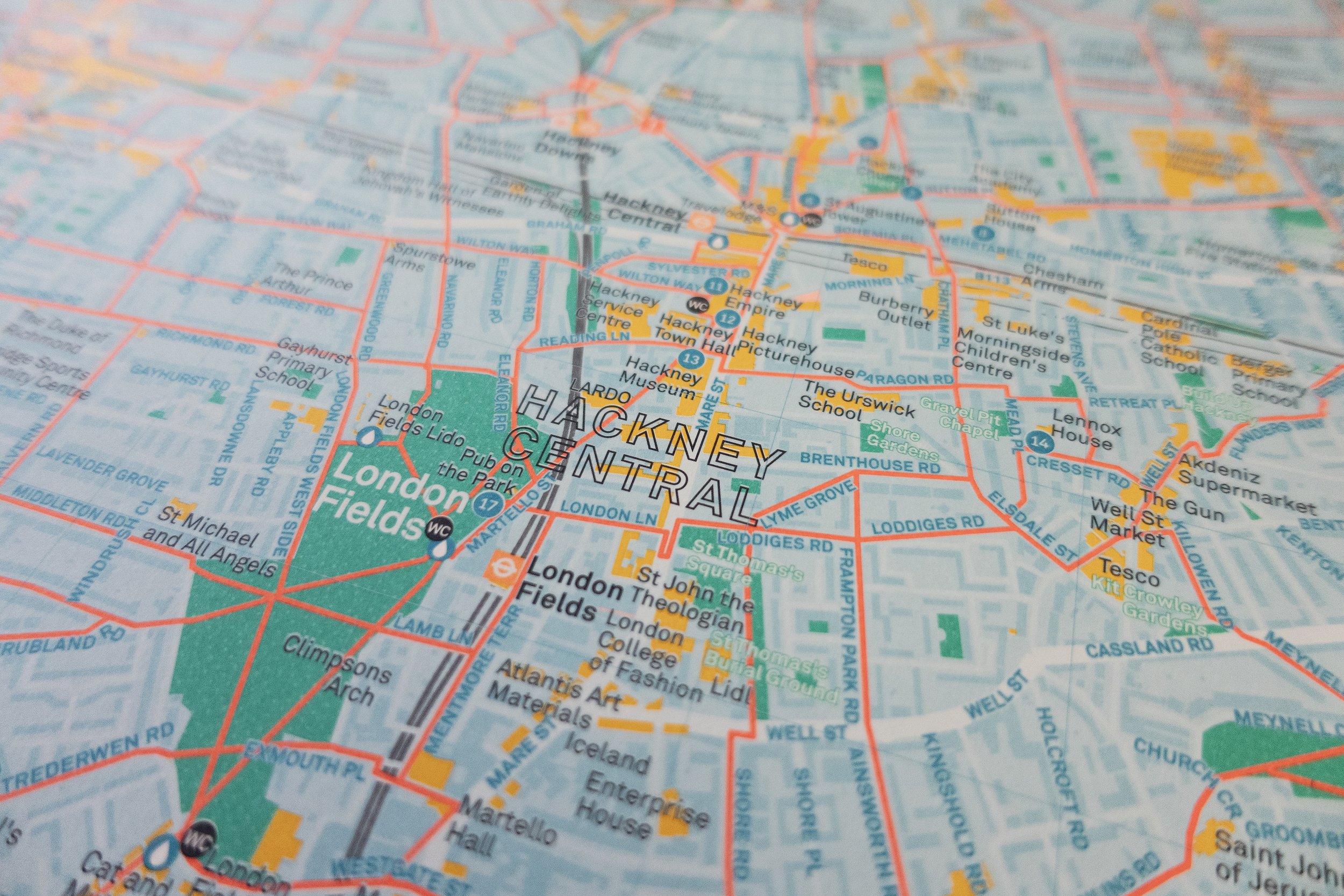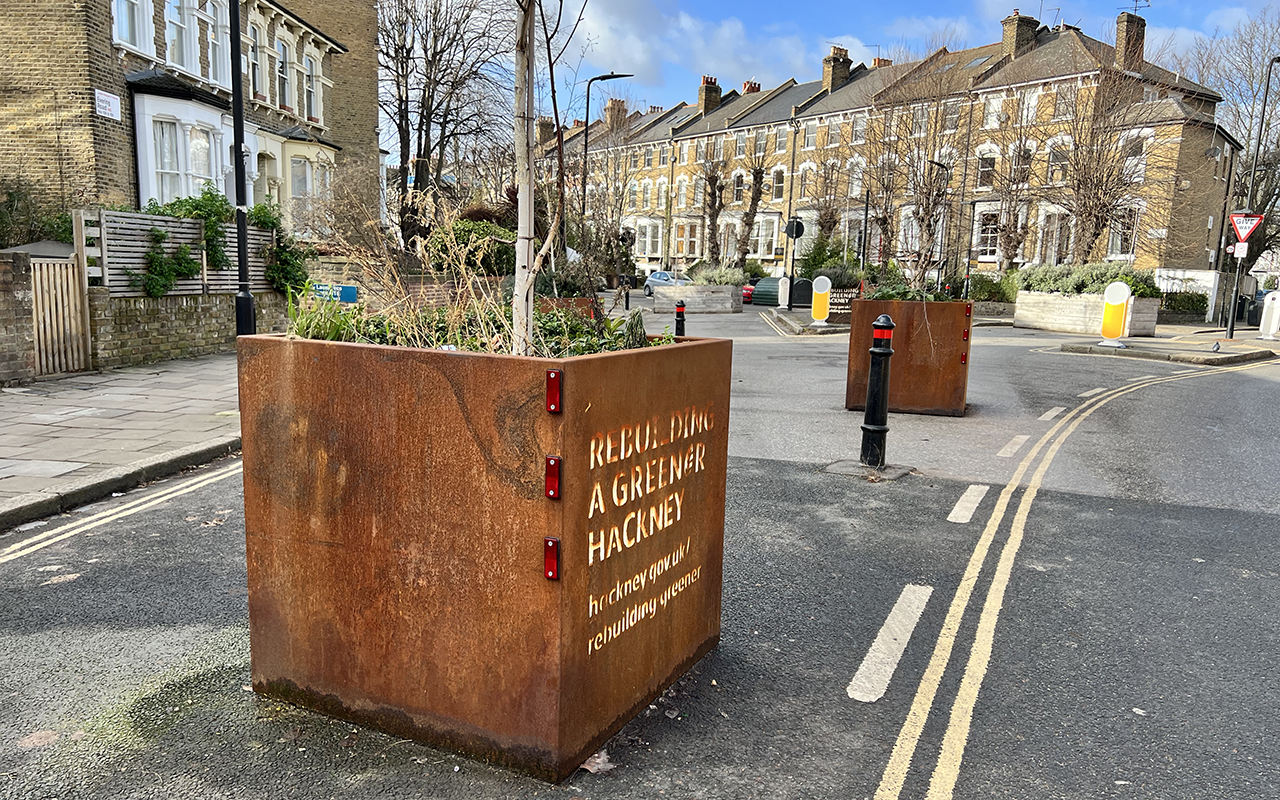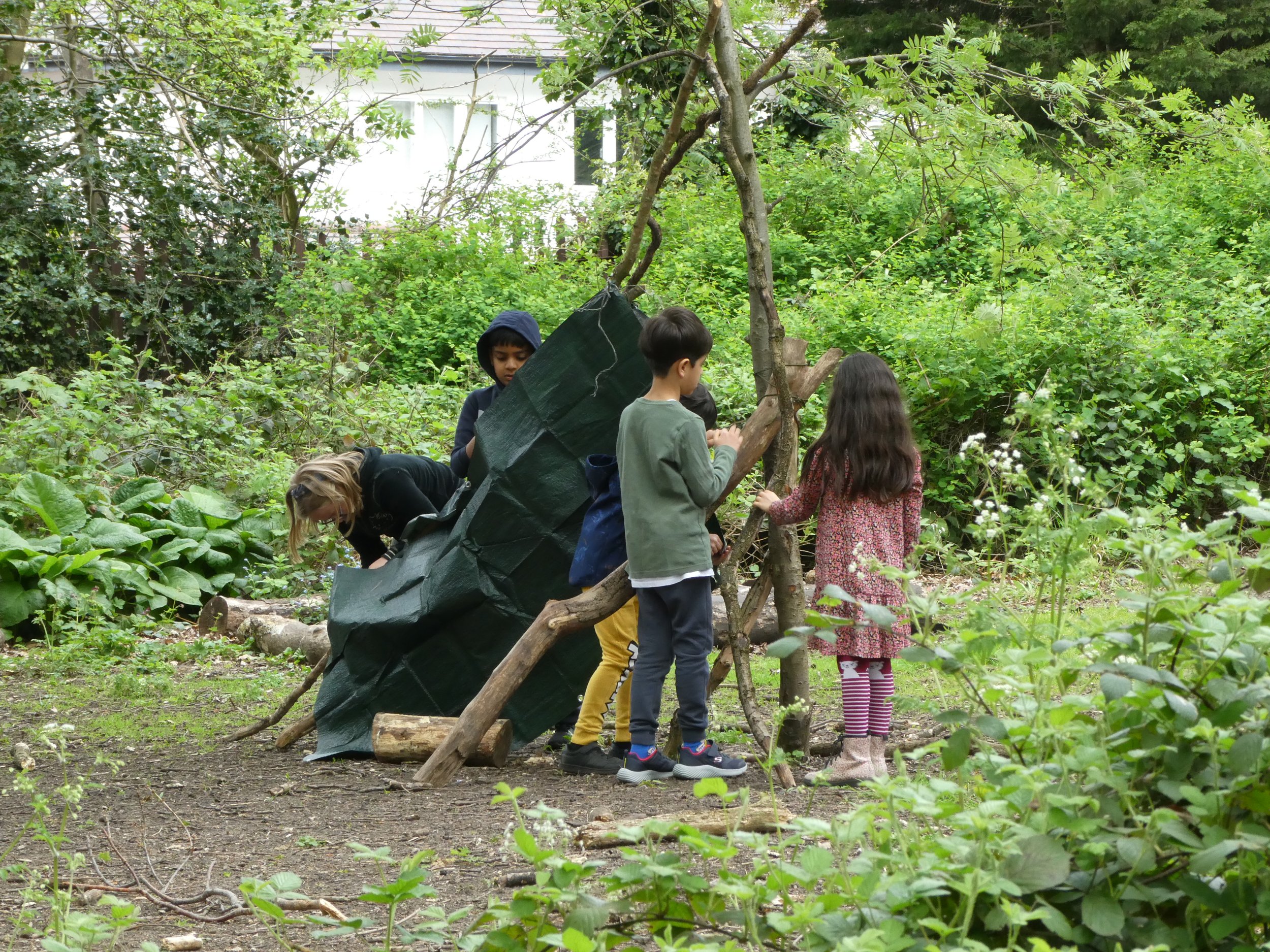365 Ways to Help the Planet - Part 1
The planet we call home is facing a multitude of environmental challenges, from climate change to deforestation and plastic pollution. These issues not only impact the natural world but also the lives of every person on Earth. However, it's not too late to make a difference. Small changes in our daily routines can have a significant impact on the health of the planet. We’ve been sharing daily ways to help the planet on our Instagram Page. In part 1 of 365 Ways to Help The Planet, we will explore some simple and effective ways that everyone can contribute to preserving our planet for future generations. From reducing waste to choosing eco-friendly products, there are many things we can do to help protect the environment
1. Learn how to sew.
In the world of fast fashion it’s become a forgotten skill that will give your clothes a much longer life.
2. Do a local litter pick.
Make sure to get your friends and family involved too!
3. Walk to school instead of driving!
The average primary school student lives a 15 minute walk from school. Try tracking your steps and see how much walking you get done in a week!
4. Try renting instead of buying things like tools.
This is a great way to save money and support a circular economy - a great suggestion from Dalston Library of Things.
5. Refill your water bottles.
Try using one of the 100 drinking water fountains installed by the Mayor of London and Thames water. The average London adult buys more than three plastic water bottles every week - a startling 175 bottles every year per person.
6. Re-wild your garden with a Seedball.
Growing native wildflowers helps increase our bee, butterfly and other garden wildlife populations.Not sure of where to start? Seedball is a non-profit company on a massive mission to help increase the abundance of British wildflowers and wildlife that depend upon them. They believe that if we can all better use whatever space we have available to us (whether a back garden, balcony, window box, little patio etc) we can together have a hugely beneficial impact on our local ecosystems.
7. Take your own bags with you to the supermarket and shops.
But don’t just buy any bag for life. Invest in a Kind Bag made from 100% recycled plastic. Fellow Hackney residents Kind Bag are on a mission to empower people to live a more sustainable life by creating stylish accessories that look good and do good.
8. Make some feathered friends.
Nesting, like housing in London, is at a premium. Putting up bird boxes in urban areas is a wonderful way to protect some of the UK’s most iconic species. Our Hackney Green Influences created some amazing boxes from recycled wood with Solo Wood Recycling.
9. Newspapers are one of the easiest materials to recycle.
For every meter high pile you recycle a tree is saved!
10. Turn the Thermostat down!
Cutting your central heating temperature by just 1°C will make a big difference to the amount of energy you use. Plus, you could cut down your heating bills by up to 10%.
11. Carry a reusable water bottle.
In total, some 7.7billion plastic bottles are bought across the UK each year, resulting in substantial amounts of single-use plastic waste. Buy a bottle from Ocean Bottle and go beyond sustainability, supporting livelihoods for people in coastal communities while keeping plastic out of our ocean. For every bottle sold, Ocean Bottle have committed to the collection of the equivalent of 1000 plastic bottles. That’s 11.4kg of plastic put to better use. Collectors trade plastic for money and get access to social resources such as healthcare, tuition, tech, and micro-finance.
12. Bleed your radiators.
This is a simple and easy way to make sure they are working to optimal efficiency.
13. Cycle for short trips instead of driving.
Clean Cities recently shared the amazing fact that around HALF of all car journeys in London can be cycled in 10 minutes.
14. Calculate your environmental footprint.
Calculate your impact then choose and track challenges to help reduce your environmental footprint with WWF's My Footprint App. 2021 made us all stop and think. In the face of extreme weather, forest fires and the global pandemic, what is it that we can all do to help our planet? We’ve seen the devastating impact that human activity can have on the natural world, but it doesn’t have to be this way. We can build a better world by making small changes to our everyday lives. Start by calculating your footprint to really understand your personal impact.
Turning down your laundry. Temperature can save up to 60% of the energy used in every wash, showing that every degree really does make a difference. Lowering the temperature of your wash is the most important part of reducing the environmental impact of your laundry. Up to 60% of laundry's carbon footprint comes from heating water - that's more than packaging, production and shipping!
15. Turn your food scraps into tasty snacks.
This is another challenge we found on the wonderful MyFootPrint app. One of the easiest things we can do to help the planet is to reduce the amount of food we waste. That's why we're challenging you to get creative with your food scraps to turn them into a tasty meal or snack. Just try it three times over a week - there are plenty of ideas here to get you started.It's estimated that UK households are wasting 4.5 million tonnes of edible food a year. And much of this ends up in landfill, generating greenhouse gases that heat up our planet. But just by being a little more mindful and creative with the food you have, you can make sure you're getting the most out of it and wasting less.Did you know you can turn your veg peelings and scraps into vegetable stock? Or use wilted root veg to make yummy muffins and cakes? Or even use your citrus peel to make marmalade, chai tea and even a natural household cleaner? There are plenty of ideas here to inspire you and help you have a little fun while you save the planet. It is time to #FixTheFoodSystem. By doing this challenge you are also taking part in WWF-UK's Eat4Change campaign to encourage sustainable diets and join the fight for our planet.
16. Switch a journey to walking and see Hackney differently with Footways.
The Footways Hackney map connects Hackney Central and other major places with welcoming, appealing and accessible streets. Printed maps are available to pick up from Hackney Museum.
18. Volunteer with FoodCycle and become a Project Leader.
FoodCycle is a national charity that puts on weekly, free community meals for people in need. These meals are cooked by volunteers with surplus food that would otherwise go to waste, and our volunteers serve a delicious three-course meal to our guests, as well as share in the meal and conversation with them – we believe no one should be hungry or lonely!
FoodCycle Bow Road meets every Friday evening at the Bow Road Methodist Church, and FoodCycle Hackney meets every Thursday lunchtime at the New Kingshold Community Centre. FoodCycle are looking for Hosting Project Leaders to join and lead the team at sessions. FoodCycle Project Leaders are the inspirational volunteers that keep our projects running. Becoming a Project Leader is a unique opportunity to gain a whole range of skills and experiences. By regularly leading at FoodCycle Bow Road or Hackney, and being part of the Project Leader team, you will witness the profound impact that the project has on the local community. The team as a whole plays a vital role within the FoodCycle Family- helping to strengthen and build a resilient community through conversation, and create a warm, welcoming environment for the guests – this helps support mental health, wellbeing and reduce loneliness. Lots of our guests are lonely or vulnerable and really value the volunteers' support.
19. Demand healthier and safer streets.
A new study from Climate Charity Possible and University of Westminster has revealed that low traffic neighbourhoods (LTNs) have been incredibly successful in reducing motor traffic on the streets within their boundaries. The research, which is the largest of its kind to be conducted in the city, found that roads within LTNs have seen a substantial decline in the number of vehicles on the road. The study looked at data from a number of different LTNs across London, and found that the average decrease in motor traffic on roads within these neighbourhoods was almost ten times higher than the average increase in traffic on boundary roads. This suggests that LTNs are having a significant impact on overall traffic levels in the city. The report has been welcomed by campaigners, who are calling on local authorities to use the findings to introduce more LTNs in London. They believe that these neighbourhoods can have a positive impact on the environment, public health, and overall quality of life for residents. In addition to calling for more LTNs, campaigners are also urging authorities to take further measures to address traffic on boundary roads. This could include things like implementing road closures, speed limits, and other traffic-calming measures. Overall, the study provides strong evidence that LTNs can be an effective way of reducing traffic in urban areas. With London facing ongoing challenges related to air pollution, congestion, and road safety, the findings of this research could help inform future policy decisions and help create healthier, more livable neighbourhoods for all Londoners
20. If you’re doing some DIY then follow the BUDD rule.
Buy: only what you need.
Use: everything you buy.
Donate leftovers to a neighbour or organisation like Solo Wood.
Dispose: of waste responsibly
21. Enjoy a weekend walk on a section of the London Loop.
The London Loop is an amazing 150 mile walk around the edge of London’s greenbelt. It is split into 24 sections between Erith station and Purfleet. Taking the 150 mile (242km) London LOOP is a great way to get to know London better. Made up of 24, mostly flat or gently sloping sections, it combines beautiful open spaces like Hainault Forest Country Park and Bushy Park with historic buildings (Hall Place and Black Jack's Lock & Mill). Most sections begin near a main line train station so there’s no need to drive! You can download a certificate to show that you have completed the whole of the London Loop from the TFL web site. Updated guides are available from Inner London Ramblers website or can be followed using the Go Jauntly app.
22. Unplug.
This is something some of our green influencers suggested for a challenge we set them over the Christmas break. In her book 24/6: The Power of Unplugging One Day a Week, Webby Award founder, Emmy-nominated filmmaker, and mother of two Tiffany Shlain explores how turning off screens for 24 hours each week can work wonders on your brain, body, and soul. There’s also benefits to the environment and your bills.
23. Keep the warmth in!
Start small by checking for draughts around floorboards, doors and windows. You can put in temporary solutions such as draught excluders which could be handmade or shop bought. This is a wonderful tip from the WWF MyFootprint app We all know how a draft makes us feel in an otherwise warm home and, that heat rises, with a quarter of heat lost through the roof of the average home. Trapping the heat before it can escape will keep your home warmer for longer, reducing the need for central heating and saving on your energy bills!
24. Noble Rot.
Allowing logs to rot can have positive effects on the ecosystem. The rotting wood provides a habitat for a wide range of creatures, including insects, fungi, and small mammals. These organisms help to break down the wood, recycling nutrients back into the soil. The decomposition process also creates a diverse and healthy soil ecosystem, which can benefit other plants in the garden.
25. Apply to be a London National Park City Ranger.
Join this growing community of volunteer Rangers who aim to make life better in London National Park City. London National Park City are looking for nature connectors, optimists, artists, rewilders, local guides, photographers, gardeners, writers, teachers, storytellers and people with other skills and talents to share with others. What you will do as a Ranger will vary according to your own skills, experience and capacity. You can scale a project you are already working on, bring fresh ideas or simply your proactive energy to create something new with other Rangers or support them with their existing work.
26. Explore urban nature in a new way with the Greenground Map.
Created by from Helen Ilus Larger edition of the first innovative Greenground Map connecting 800 parks and open spaces with 18 lines + an Art Line to one big walking network in Greater London and beyond. Perfect map for anyone who wants to explore London green spaces on foot or by bike. The eco-friendly map is printed on the FSC® certified recycled 120g Nautilus Classic paper with inks based on natural resins and oils.
27. Host a birthday party in the woods.
This can be a fun and unique experience for children. Not only will they be able to enjoy the great outdoors, but they will also be able to tap into their innate animal instincts as they build dens to shelter themselves from the elements. The challenge of building a shelter will not only be a fun and engaging activity for the children, but it will also help them to develop important skills such as problem-solving, teamwork, and creativity. As they work together to build their dens, they will become absorbed in the natural world around them, learning about the different types of plants and animals that inhabit the forest. To make the party even more special, you could include activities such as nature walks, scavenger hunts, and games that encourage the children to explore their surroundings. You could also provide materials such as branches, leaves, and moss for the children to use in building their dens.
28. Take a walk along the Capital Ring
The Capital Ring is a circular Walk London route consists of 15 sections between Woolwich and Becton District Park. The Capital Ring Walk offers you the chance to see some of London's finest scenery. Divided into 15 easy-to-walk sections, it covers 78 miles (126km) of open space, nature reserves, Sites of Specific Scientific Interest and more. Updated guides are available from Inner London Ramblers website or can be followed using the Go Jauntly app.
28. Host a swap shop.
A swap shop is a community-based program where individuals can exchange goods and services with one another, rather than purchasing them new. Some of the benefits of a swap shop include:
Reducing waste: By reusing items that would otherwise be thrown away, a swap shop helps to reduce the amount of waste that goes to landfills.
Saving money: By exchanging goods and services, individuals can save money that would otherwise be spent on purchasing new items.
Building community: Swap shops often bring together individuals from different backgrounds and socioeconomic levels, promoting a sense of community and encouraging social interaction.
Encouraging creativity: By providing access to a variety of items, swap shops can inspire creativity and resourcefulness in individuals who may not have been able to afford the items otherwise.
Promoting sustainability: Swap shops are a sustainable way of living, as they help to reduce the negative impact of consumerism on the environment.
Saving resources: By reusing items, swap shops help to conserve resources that would have been used to produce new items.
Promoting self-sufficiency: Swap shops can help people to be more self-sufficient by providing access to goods and services that they may not have otherwise been able to afford.
Increasing accessibility: Swap shops can make goods and services more accessible to people with low incomes, or people living in areas where these goods are not readily available.
30. Help create Ten New Parks for London.
This CPRE London campaign aims to protect sites which have been undervalued, simply left doing nothing – but which local communities want to bring back into use and turn into major new parks. One such site is just down the River Lea from us in Hackney. East London Waterworks hopes to transform an East London industrial site into community-owned natural swimming ponds and a biodiverse park. They have recently reached their latest crowdfunding target of £500,000!
Against the backdrop of an unprecedented cost-of-living crisis, we’ve raised half a million pounds in 7 months with the support of 4612 people, and achieved our primary aims. We’ve demonstrated that the community wants East London Waterworks Park to happen. We’ve demonstrated we can raise money to transform an industrial site into a brand new park for East London to provide educational, economic, health and environmental benefits for our community. And we’ve demonstrated that, together, we can take real steps to tackle the climate crisis, biodiversity collapse, social inequality and social isolation.
31. Take the train.
Commuting in London isn’t the most fun thing in the world but it does give you a small pocket of time during your day to do with as you please. This post was created and posted during a short 15 minute train journey that I took during my day. It’s certainly not something that I could’ve done if I’d driven to my appointment.






